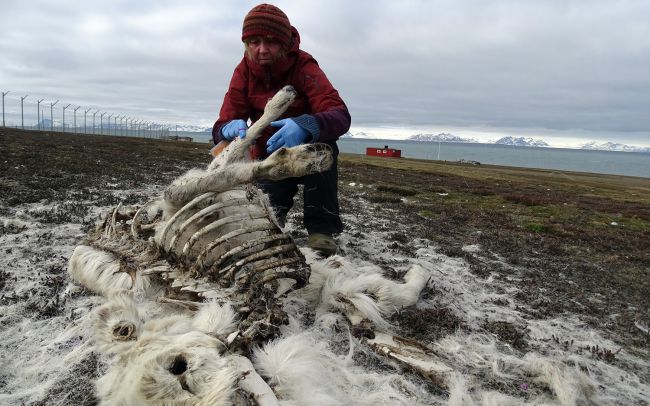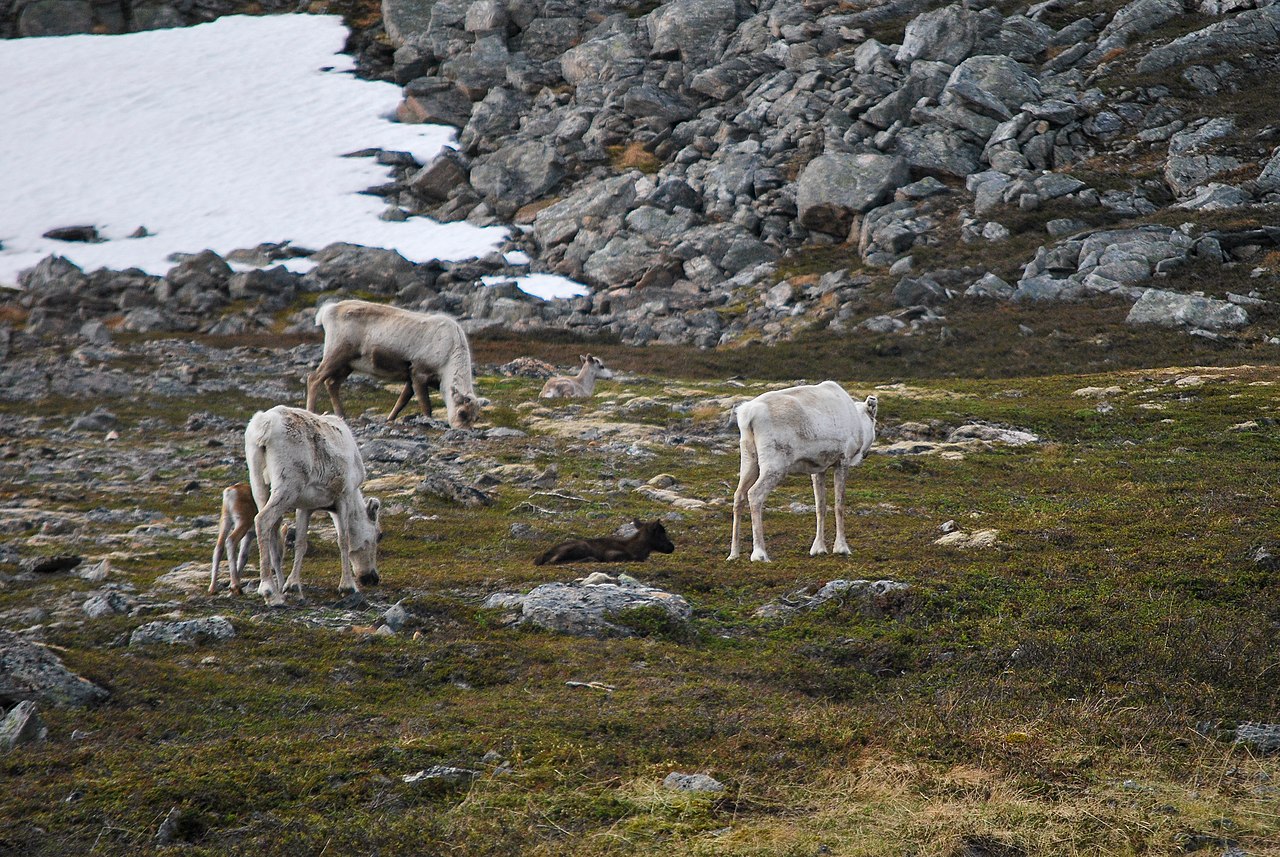Scientists have found more than 200 reindeer bodies on the island of Svalbard, lying in an archipelago of glaciers and frozen tundra between the North Pole and Norway. Decomposing bodies showed signs of starvation. The cause is probably climate change – global warming.
Svalbard reindeer (Rangifer tarandus platyrhynchus ) is a small subspecies of reindeer; an endemic species to the islands of Svalbard, where it has lived for at least 5,000 years. It is estimated that there are currently around 10,000 individuals.

A sad spectacle waited for environmentalists from the Norwegian Polar Institute (NPI) during a ten-week survey of the reindeer population of in Svalbard. The researchers found that the number of individuals had fallen more than they expected, and the reindeer were much thinner than they should be.
An Ice Barrier
Unusually high temperatures and more rainfall in December are likely to cause more than 200 deaths.
Rainfall solidified and created an ice crust that prevents the reindeer from procuring the vegetation. Starvation forced the reindeer to dig pits to get to seaweed and kelp in the snow along the coast. However, they have a lower nutritional value than usual pasture diet.
During a 10-week investigation, reindeer grazing on the cliffs were spotted, which these herbivores do rarely if they have enough fare. They do not have motor skills like mountain goats. Movement on steep cliffs is risky for them. During the inhospitable years, the animals desperately resorted to climbing 300 meters to search for food.

Reindeer travels longer distances for vegetation due to ice-covered pastures. The youngest and oldest individuals die first in extreme food shortages.
“It’s scary to find so many dead animals,” Åshild Ønvik Pedersen, an NPI terrestrial ecologist, told NRK magazine.
“Some of the mortality is natural because there were so many calves last year,” she said. “But the large number we see now is due to heavy rainfall, which is due to global warming.”
Source: https://www.livescience.com/66047-200-dead-reindeer-norway.html
Credit: wikipedia.org, Elin Vinje Jenssen/Norsk Polarinstitutt















